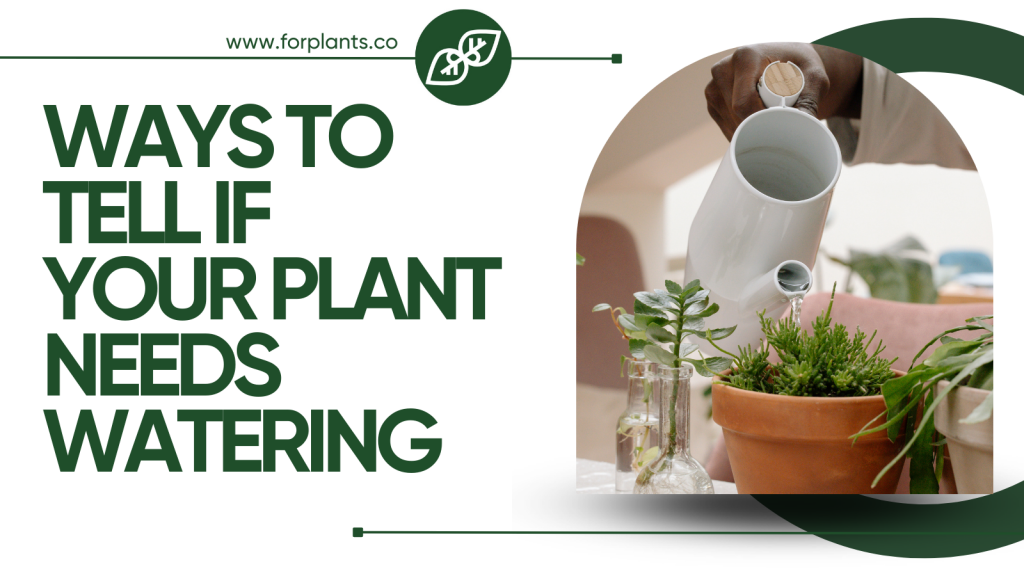Anyone can pour water on a plant. But it takes time and experience to understand how plants use water and the many variables that come into play. These include the type of plant, its size, the soil texture, recent weather, sun exposure, time of day and time of year. In short, watering your garden shouldn’t be a rote task.
The amount of water a plant requires is constantly changing, so you need to be paying attention. There is no “one size fits all” approach to watering plants, like us plants are individuals and have individual needs. Watering your plants correctly is one of the most important factors in keeping them healthy.
Are you over watering your plants? Or under watering them?
Watering plant is where many people go wrong with plant care and are lots of factors you need to be aware of when taking care of plants.
Here’s some ways for you to tell if your plant needs watering:
Pay attention to your plants
Wilting or drooping leaves can often indicate that your plants are suffering from lack of water. Checking your plants every day or two allows you to observe small changes like wilting leaves. Being aware of changes like this will mean you can act preventatively if your plant is drying out and is far more effective than a fixed watering schedule. Be careful to use this in combination with assessing the soil, as there are other things that can cause wilting, including overwatering or disease. It’s really important to treat the right cause of wilting in your plants, rather than making the problem worse.
Research your plant’s needs.
When you start growing a new plant it is a must to do a bit of research into its specific plant care requirements.
Check your plant’s water requirements as this will help greatly when assessing whether to water or not. Knowing which plants will dry out quicker than others is a great way to be on top of your watering routine.
Some plants love wet conditions and others like it dry. Some can tolerate drying out well before a good soaking, where others need steadily moist environment. Remember to check plants in warm, dry rooms regularly, as well as those in hanging baskets as they will dry out very quickly.
Check the surface of the soil
At a quick glance, you can tell if the soil is dry on the surface of your pot. Moist soil is almost always darker than dry soil, so when you see lighter brown-coloured soil this indicates surface dryness. It isn’t so useful for drought-tolerant plants like Cacti, Succulents and Ficus species; watering these when only the surface is dry will inevitably lead to overwatering. For these plants, you need to delve a bit deeper to know if they need watering.
Poke your finger into the soil
One of the easiest ways to check if your plant needs watering is to stick your finger into the soil. This gives you a clearer indication of the soil moisture content than simply looking at the surface. You can reach 2-3in into the soil and feel how moist or dry the soil is. Use your fingertips to feel the bottom of the potting soil through the drainage holes in the bottom of the plant pot. You will be able to assess the dryness of the soil to help determine whether watering is required. This technique works best for smaller potted plants because of limited reach. For many plants, the depth at which the soil is dry is a good indicator of when to water the plant.
Soil stick
If you don’t want to get your hands dirty checking soil moisture, get yourself a cheap, unfinished wood chopstick, and poke it down into the soil. Think of it like a cake tester: If the soil sticks and darkens the wood, it’s still wet, and if the stick emerges dry, without any wet soil stuck to it, it’s probably time to water. If you don’t have any chopsticks, you can also use a wood dowel, about the size of a chopstick or pencil, sharpened to a point on one end. One advantage of this method over using your fingers is that you can get the stick deeper into the pot.
Monitor the weight of the plant pot
Lift your pots to determine their weight. Dry soil is much lighter than wet soil, so there will be a significant weight difference between a potted plant that has been watered and one that is dry. You’ll get better at this technique the more you try it. By regularly picking up your potted plants you’ll know when individual ones need watering. Once you finish watering, lift the pot so you get an idea of its heaviest weight. This makes it easier to compare its weight after a few days. If it feels a lot lighter, chances are it needs watering!
Use a moisture sensor
If you have a tricky plant, or if you just want to be a bit more exact about the process, you could use a moisture meter to assess whether your plants need water. These are inexpensive and reliable, and can make a big difference if you are having problems. You can use a moisture sensor by placing the probe about ¾ of the way into the potting medium. Moisture levels will be shown on a dial, sometimes indicated by colour, with red (soil is dry), green (good moisture level), blue (soil is too wet).
So there it is, simple and helpful tips to help you determine when to water your plants. If you follow this advice you’ll soon be a pro with the most important part of your plant care routine which is WATERING.



